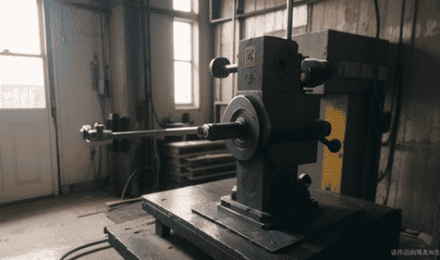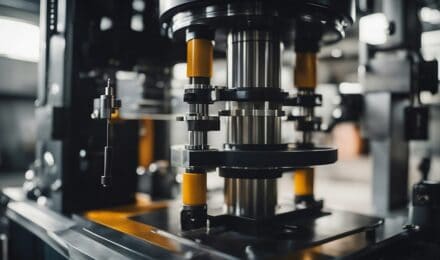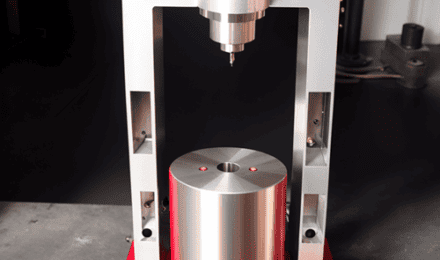Hydraulic presses are powerful machines widely used in various industries for their ability to generate immense force. However, despite their robust construction, hydraulic presses are not invulnerable to damage or breakage. Understanding the potential causes of hydraulic press failure is essential for operators, maintenance personnel, and decision-makers. In this article, we will explore common factors that can lead to hydraulic press breakage and discuss preventive measures to mitigate these risks.
Overloading
The most common reason for a hydraulic press to break or fail is overloading. Each hydraulic press has a maximum capacity, usually measured in tons, that indicates the maximum pressure it can safely exert. Overloading the press—applying more pressure than its maximum capacity—can lead to catastrophic failure.
The components most at risk are the hydraulic cylinder and the frame. If too much force is applied, the cylinder’s seals could rupture, leading to a hydraulic fluid leak. The frame could also warp or crack under the excessive load.
Inadequate Maintenance
Neglecting regular maintenance and failing to address potential issues in a timely manner can significantly increase the risk of hydraulic press breakage. Lack of routine inspections, improper lubrication, and ignoring signs of wear and tear can lead to the accumulation of debris, component failure, and compromised performance.
Preventive Measures: Establish a comprehensive maintenance program that includes regular inspections, lubrication of moving parts, and cleaning of critical components. Follow the manufacturer’s maintenance guidelines and schedule to ensure proper upkeep. Promptly address any signs of wear, leaks, or unusual noises to prevent further damage.
Using Incorrect Fluids
Contamination and the use of incorrect hydraulic fluid can have detrimental effects on a hydraulic press. Contaminants such as dirt, moisture, or air can cause blockages, erosion, and corrosion within the system, leading to component failure. Using hydraulic fluid that does not meet the manufacturer’s specifications can result in reduced performance and damage to seals and other critical parts.
Preventive Measures: Use hydraulic fluid that is recommended by the manufacturer and meets the specified requirements. Implement proper filtration systems to remove contaminants and regularly monitor fluid quality. Ensure clean hydraulic fluid reservoirs and promptly address any signs of contamination or leaks.
Improper Alignment and Tooling
Improper alignment and the use of incorrect or poorly designed tooling can also contribute to hydraulic press breakage. Misaligned tooling can cause uneven force distribution, leading to stress concentration points and potential failure. Additionally, using tooling that is not suitable for the specific application can result in excessive stress on the press components.
Preventive Measures: Ensure proper alignment of the tooling within the press, following the manufacturer’s guidelines and recommendations. Use appropriate tooling that is specifically designed for the intended application. Regularly inspect and maintain the tooling to prevent wear, damage, or misalignment.
Manufacturing Defects
While less common, manufacturing defects can also cause a hydraulic press to break. This could include flaws in the materials used, such as the metal in the frame or cylinder, or faults in the assembly of the machine.
How to Prevent Damage
Preventing damage to a hydraulic press primarily involves proper operation and maintenance.
- Avoid Overloading: Always adhere to the manufacturer’s recommended maximum load. If you need to exert more pressure, consider upgrading to a press with a higher capacity.
- Regular Maintenance: Regularly inspect the press for any signs of wear, damage, or leaks. Change the hydraulic fluid and filters at the manufacturer’s recommended intervals. Regularly lubricate moving parts.
- Use the Correct Fluids: Always use the hydraulic fluid recommended by the manufacturer. If you need to use a different fluid, consult with the manufacturer or a hydraulic specialist to ensure it’s suitable.
- Quality Equipment: Purchase your hydraulic press from a reputable manufacturer. While defects are rare, a quality manufacturer will stand by their product and offer support and repairs if necessary.
Conclusion
While hydraulic presses are robust machines, several factors can lead to their breakage or failure. By understanding the common causes of hydraulic press breakage and implementing preventive measures, operators and maintenance personnel can minimize the risks associated with press failure. Adhering to tonnage capacity, proper alignment and tooling, regular maintenance, correct hydraulic fluid usage, and comprehensive operator training are crucial in ensuring the longevity and reliable performance of hydraulic presses.






